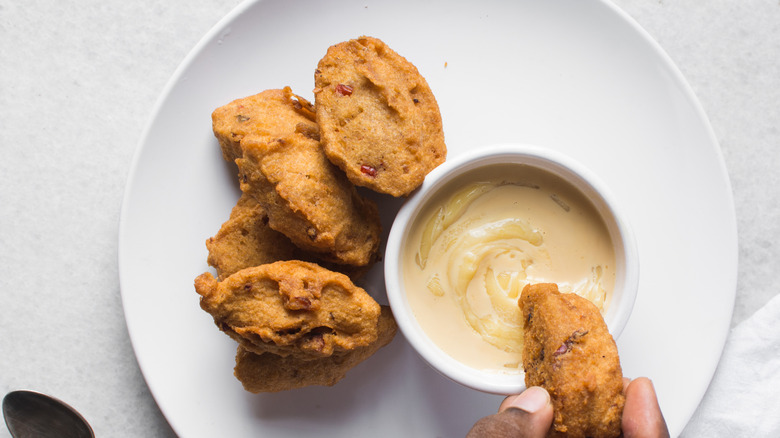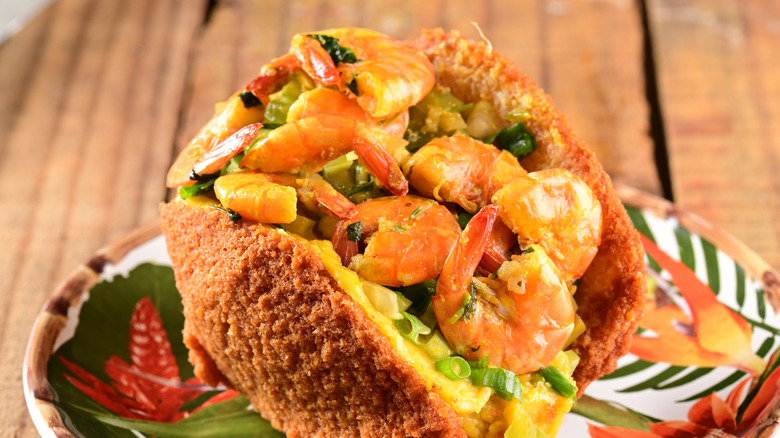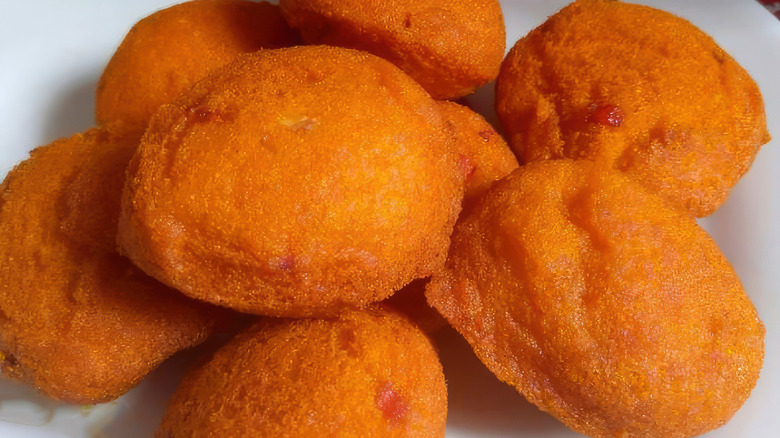Why There Are So Many Variations Of Akara, The Nigerian Plant-Based Fritter
Nigeria is a beautiful West African country filled with amazing varieties of cultural traditions and flavorful foods. Among the most popular dishes originating from Nigeria is Akara, a plant-based fritter made from black-eyed peas. Akara has its origins in the Yoruba culture of southwestern Nigeria, especially in regions like Oyo, Ogun, and Lagos.
Over time, it spread across West Africa and in the diaspora, eventually reaching Brazil, where it became known as acarajé, introduced by Africans who had been transported there through the transatlantic slave trade. Nowadays, Afro-Brazilian women, particularly in Bahia, keep this heritage alive by selling acarajé on the streets while dressed in traditional attire. In Nigeria and Brazil, Akara has become a beacon of cultural resilience and a beloved comfort food enjoyed with pap or bread for breakfast.
This forced migration allowed various cultures to use diverse ingredients and methods of cooking to create the many forms of akara enjoyed globally today. Each variation from Africa to the Americas highlights local ingredients, tastes, and cultures, showing how a basic (but delicious) fritter can evolve and incorporate new flavors while staying true to its origins.
From Nigeria to the world
One of Akara's closest international relatives is Brazil's acarajé, which shares deep roots with the Nigerian variant, Akara Ijesha. Both versions have a delightfully crunchy exterior with seafood added to the mix, though they present distinct regional differences. Akara Ijesha often includes shrimp or prawns in the batter and is deep-fried in palm oil, which gives it a unique, savory crunch that distinguishes it from other Nigerian versions.
Acarajé has a similar appearance, but usually, it gets split open and filled with shrimp, green tomatoes, onions, and other options, then topped with a nut paste called vatapá, salsa, or spicy caruru (okra mixture). It's a lovely blending of West African traditions with Brazilian flavors. Some versions might add fresh shrimp rather than dried, but the traditional recipe emphasizes dried so the shrimp shines alongside the rich, nutty, and spicy flavors. You know you've got the real thing when the delicious crunch billows into soft, tender goodness.
Global twists on a West African classic
Across the Caribbean and the Americas, Akara-inspired dishes have taken on new identities, reflecting the different cultures that adopted them. In the Caribbean, fritters often contain native spices and alternate legumes, which create new flavors that arise from combining African roots with island contributions. In Trinidad and Tobago, for example, they might include local hot peppers or curry spices, which add a bold, spicy twist.
In the American South, you have Hoppin' John, a dish that can remind you of akara, as it mixes black-eyed peas with rice and seasoning. Even in contemporary vegan cuisine, akara is gaining popularity, with chefs throwing in fresh herbs, corn, or other vegetables to modernize the plant-based delicacy. These spinoffs show just how adaptable and versatile this dish really is. Each new version tells a unique story, capturing something special about where it ended up. With thousands of miles between these delicious variations, all roads lead back to Nigeria.


